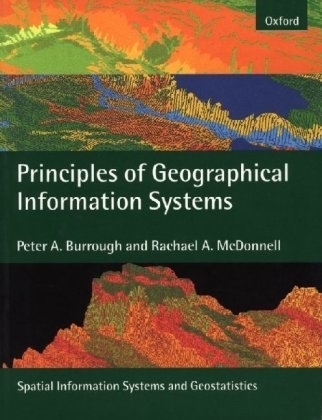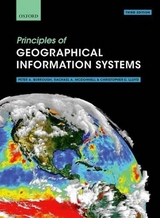
Principles of Geographical Information Systems
Clarendon Press (Verlag)
978-0-19-823365-7 (ISBN)
- Titel erscheint in neuer Auflage
- Artikel merken
This book is a completely new version of the highly successful Principles of Geographical Information Systems for Land Resources Assessment which was first published in 1986. GIS are not just used for electronic map-making but today are major tools for the management of our physical and social environment. GIS are used to assist political decisions and play a part in market research, in the management of utility services, in automated navigation systems and in many other fields. This book presents a strong theoretical basis for GIS, which is often lacking in other texts. Spatial data are usually based on two, dichotomous paradigms, exactly defined entities in space, such as land parcels, or the continuous variation of single attributes, such as temperature or rainfall. Methods for modelling both kinds of phenomena and storing them in spatial databases are described in detail, including the use of geostatistics for interpolating from points to continuous fields.
Examples of how spatial data and an analysis of their spatial interactions are used to solve a wide range of practical problems ranging from site-location analysis through land degradation, the optimizing of timber extraction from forests and the redistribution of Chernobyl radioactivity by floods are explained clearly and in detail. Much attention is paid to the problems of data quality and how statistical errors in spatial data can affect the results of spatial modelling based on the two paradigms of space. Fuzzy logic and continuous classification methods are presented as methods for linking the two spatial paradigms. The book concludes with an investigation of current developments in providing spatial data for the whole world over the Internet. As such the new volume provides a comprehensive and concise introduction to the theory and practice of Geographical Information Systems (GIS).
Targeted at undergraduates, graduates, and professionals in disciplines such as physical and human geography, hydrology, geology, environmental science, cartography, epidemiology, radioecology, agriculture, spatial planning, land tenure, and land evaluation the book explains why spatial data and the information systems based on them are important in the modern world.
Peter Burrough is Professor of Physical Geography, Utrecht University Rachael McDonnell is College Lecturer at Hertford College, University of Oxford
1. Geographical Information: Society, Science, and Systems ; 2. Data models and axioms: Formal abstractions of reality ; 3. Geographical Data in the Computer ; 4. Data input, verification, storage and output ; 5. Creating continuous surfaces from point data ; 6. Optimal interpolation using geostatistics ; 7. The analysis of discrete entities in space ; 8. Spatial analysis using continuous fields ; 9. Errors and quality control ; 10. Error propagation in numerical modelling ; 11. Fuzzy sets and fuzzy geographical objects ; 12. Current issues and trends in GIS ; APPENDIX 1 GLOSSARY OF TERMS ; APPENDIX 2 A SELECTION OF WORLD WIDE WEB GEOGRAPHY AND GIS SERVERS ; APPENDIX 3 EXAMPLE DATA SETS
| Erscheint lt. Verlag | 6.4.1998 |
|---|---|
| Reihe/Serie | Spatial Information Systems and Geostatistics |
| Zusatzinfo | 4 pp colour plates, halftones, line figures, tables |
| Verlagsort | Oxford |
| Sprache | englisch |
| Maße | 189 x 245 mm |
| Gewicht | 788 g |
| Themenwelt | Mathematik / Informatik ► Informatik ► Web / Internet |
| Naturwissenschaften ► Geowissenschaften ► Allgemeines / Lexika | |
| Naturwissenschaften ► Geowissenschaften ► Geografie / Kartografie | |
| ISBN-10 | 0-19-823365-5 / 0198233655 |
| ISBN-13 | 978-0-19-823365-7 / 9780198233657 |
| Zustand | Neuware |
| Haben Sie eine Frage zum Produkt? |
aus dem Bereich



